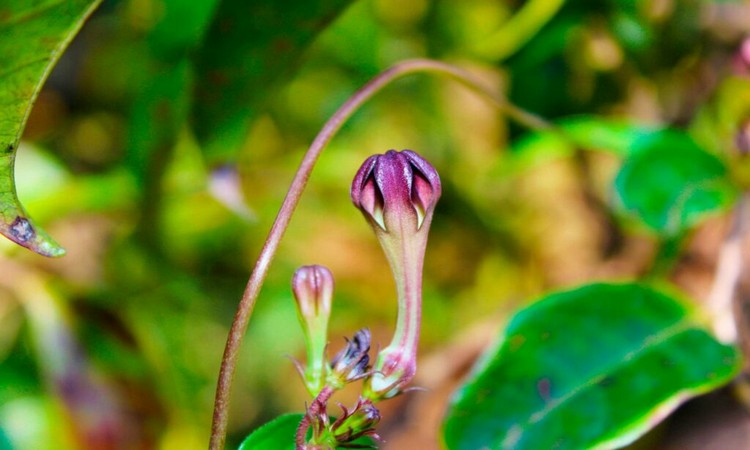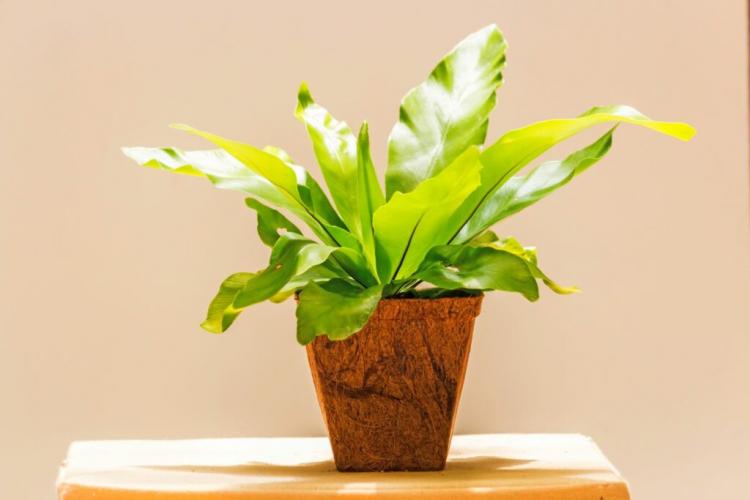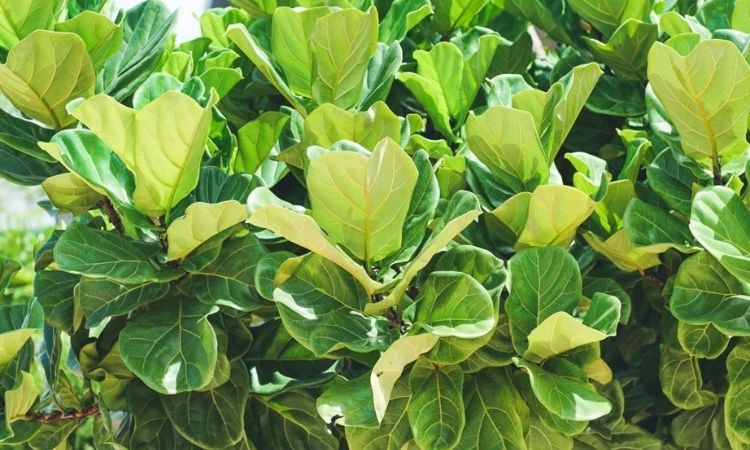Hoya Kerrii: Care And Propagation Of Sweetheart Hoya
The Hoya Kerrii plant has a very special leaf shape and is often used as a romantic gift. We will show you how to take care of Sweetheart Hoya. The plant is a great alternative to the traditional red rose on Valentine’s Day and also serves as an especially long-lasting proof of love. In this article, you will learn how to care for it properly and how to propagate it yourself.
Hoya Kerrii: Origin And Characteristics
Table of Contents
Especially on Valentine’s Day, the Sweetheart Hoya is at least as suitable as the classic red rose (pink). It has further, melodious names such as Heart Plant, Little Darling, its botanical name – Hoya kerrii – or often waxflower.
But beware: Waxflower is also called the porcelain flower, but it is a different species. Kerrii hoya belongs to the silk plant family (Asclepiadoideae), which is a subfamily of the dog poison family (Apocynaceae). Hoya kerrii is native between China and Java – one of the main Indonesian islands. It has its origin in the mountains there.
The climbing, an herbaceous plant can grow up to four meters high. The pale, bare stem is covered with opposite leaves, which remain on the plant during hibernation. Each leaf has an approximately 2 cm long petiole and a thickly fleshed, single leaf blade of approximately 12 cm wide and 10 cm long.
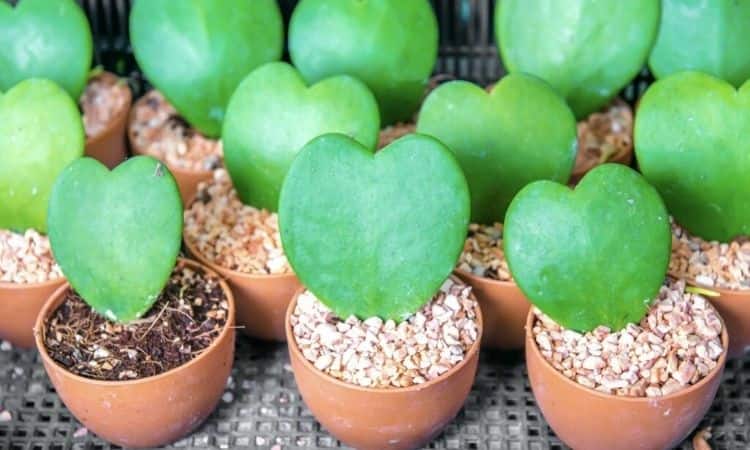
The peculiarity of the bare leaves is the two-pronged leaf tip, which is very similar to the shape of a heart. This is also the origin of the plant’s name and the reason why it is so popular as a gift on Valentine’s Day.
Hoya kerrii blooms between March and July. The conspicuous umbel flowers consist of one inflorescence each with up to 25 flowers and have a total diameter of about 5 cm. White sepals and red, downy hairy petals are formed. From the blooms, much red-brownish nectar is formed, which is usually odorless, however. The anthesis of the flowers – the time it takes for the flower to open completely – takes up to two weeks.
Varieties of Hoya kerrii
Albo-marginata: Also simply spelled Albomarginata, especially striking because of its white variegated leaves; more common than other varieties.
Variegated Hoya kerrii: The leaves have a prominent yellow border and turn green towards the middle; less common.
Reverse Variegata: The leaves have a color gradient like Variegata, but in reverse: the border is green and turns yellow towards the middle; therefore sometimes called Yellow Splash; less common.
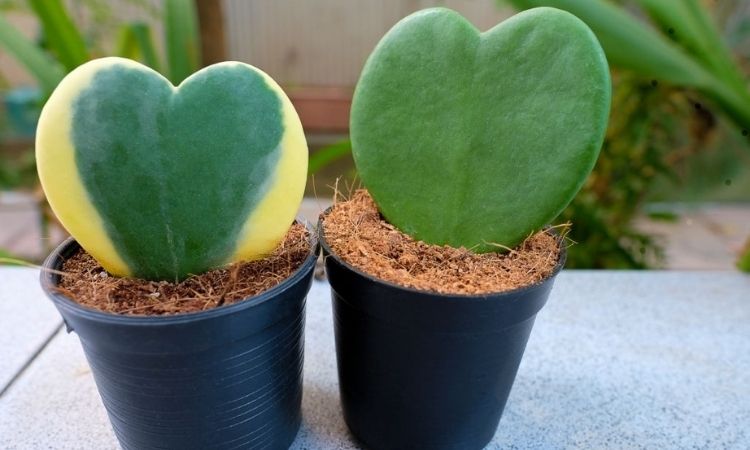
Care for Hoya kerrii
As far as the location is concerned, the sweetheart hoya plant has certain preferences. It should be bright and sunny, with a lot of direct sunlight the leaves can get burnt. In summer, a room temperature around 21°C is ideal, as is high humidity.
This is mainly due to the fact that the Hoya Kerrii originates from tropical regions. It is therefore the perfect plant for bright daylight bathrooms. The plant should be sprayed with water regularly, as this increases the air humidity. The growth period of Hoya kerrii is between March and October.
Although the plant can survive outside in summer without any problems if the pot is placed in partial shade or absconded, during the winter it should be moved to a winter home. This should be cool and yet bright, 50 – 59°F is optimal. The sweetheart plant is very sensitive to frost.
Cactus soil is suitable as a plant substrate. If you do not have such a special soil at hand, you can also make your own from universal soil, quartz sand, pumice, and expanded clay.
During vegetation, the Kerrii hoya should be watered regularly, with the soil drying out well in between. Since the plants are very sensitive to lime, rainwater is a good choice for watering. Stagnant moisture should also be avoided, but this is not a problem with good drainage. In addition, fertilizer should be applied every 3 to 4 weeks.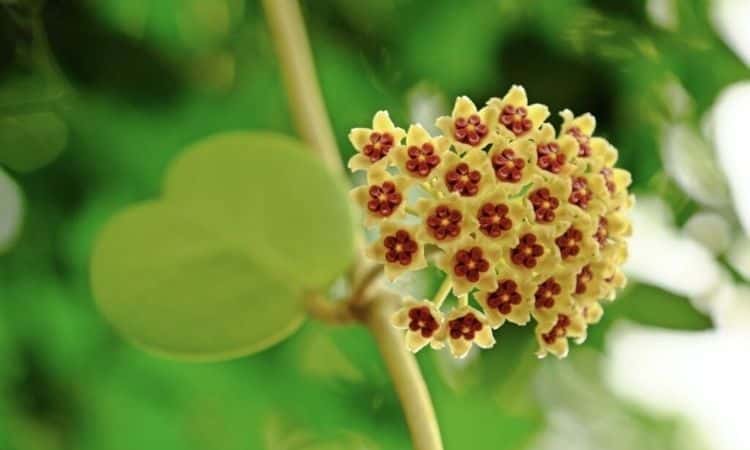
If the plants grow larger, they can be grown upwards along with a climbing aid, or alternatively, they can be placed as a hanging plant. If the pot becomes too narrow, the Hoya Kerrii should be repotted. This is usually done every two years. The best time for this is early spring, between February and March. The new pot should not be too large. Good drainage is important to avoid stagnant moisture. First, the old soil should be removed a little from the root ball. Then you can put the plant into the new pot, cover it carefully with soil and press it lightly.
The Hoya Kerrii does not need to be cut, it is enough to remove diseased or stunted parts. Since new buds for the next year are formed on the flower umbels that have withered, these should also remain on the plant.
Propagating
To propagate Hoya kerrii, it is sufficient to place cuttings. For this purpose, one leaf of the plant can be cut off and placed in fresh sowing soil, for example. With good watering and regular watering, roots will start to form and the leaf will grow. If the hoya sweetheart plant has grown well, it can be repotted into cactus soil. This is the case when the first roots grow out of the bottom of the pot.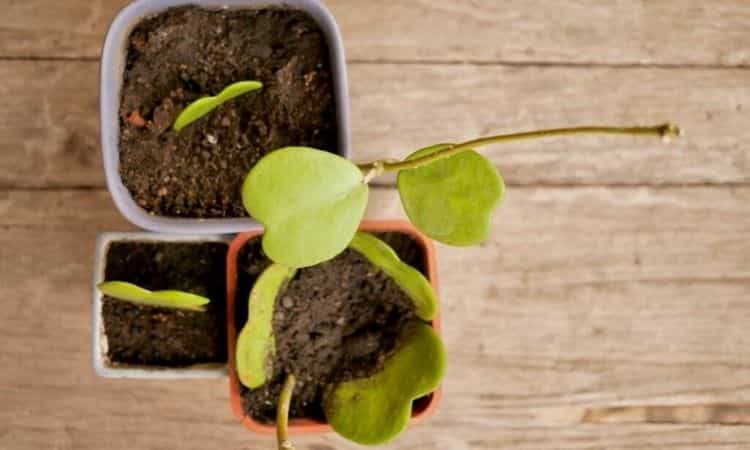
Is the Hoya kerrii Poisonous?
The plant sap and flower umbels contained in Hoya kerrii are slightly poisonous. Especially in birds, even the intake of small amounts of the poison can be sufficient to trigger symptoms of poisoning. Symptoms of poisoning include gastrointestinal problems, vomiting, and diarrhea. However, Hoya kerrii is harmless when touched.


